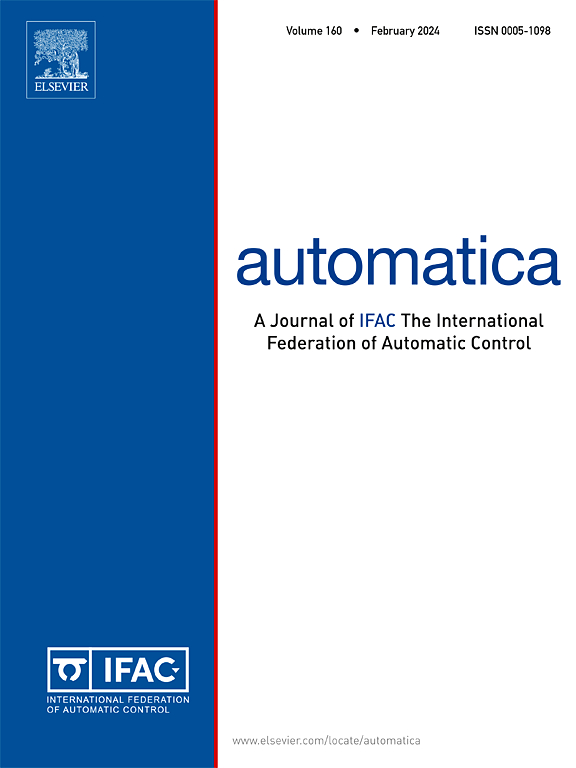Angle-constrained distributed formation control with disturbance rejection
IF 4.8
2区 计算机科学
Q1 AUTOMATION & CONTROL SYSTEMS
引用次数: 0
Abstract
The problem of angle-constrained distributed formation control was studied recently for double integrator systems. In this paper, we further study the problem of angle-constrained distributed formation control with disturbance rejection for double integrator systems. The disturbances are in the class of trigonometric polynomial with arbitrary unknown amplitudes, unknown initial phases, and unknown frequencies, which contain unknown arbitrary constant disturbance as a special case. We develop a distributed control law that combines the adaptive control technique and the internal model and show that, under the standard assumptions, the control law achieves the desired formation in the presence of persistent disturbances. Moreover, we show that the proposed control law is independent of the global coordinate frame. Numerical examples are used to illustrate our design.
具有扰动抑制的角度约束分布式地层控制
研究了双积分器系统的角度约束分布式编队控制问题。本文进一步研究了双积分器系统的角度约束分布式抗扰控制问题。扰动为任意未知幅值、未知初始相位和未知频率的三角多项式,其中包含未知任意常数扰动作为特例。我们开发了一种结合自适应控制技术和内部模型的分布式控制律,并表明,在标准假设下,在持续干扰存在的情况下,控制律可以达到期望的形状。此外,我们还证明了所提出的控制律与全局坐标系无关。数值算例说明了我们的设计。
本文章由计算机程序翻译,如有差异,请以英文原文为准。
求助全文
约1分钟内获得全文
求助全文
来源期刊

Automatica
工程技术-工程:电子与电气
CiteScore
10.70
自引率
7.80%
发文量
617
审稿时长
5 months
期刊介绍:
Automatica is a leading archival publication in the field of systems and control. The field encompasses today a broad set of areas and topics, and is thriving not only within itself but also in terms of its impact on other fields, such as communications, computers, biology, energy and economics. Since its inception in 1963, Automatica has kept abreast with the evolution of the field over the years, and has emerged as a leading publication driving the trends in the field.
After being founded in 1963, Automatica became a journal of the International Federation of Automatic Control (IFAC) in 1969. It features a characteristic blend of theoretical and applied papers of archival, lasting value, reporting cutting edge research results by authors across the globe. It features articles in distinct categories, including regular, brief and survey papers, technical communiqués, correspondence items, as well as reviews on published books of interest to the readership. It occasionally publishes special issues on emerging new topics or established mature topics of interest to a broad audience.
Automatica solicits original high-quality contributions in all the categories listed above, and in all areas of systems and control interpreted in a broad sense and evolving constantly. They may be submitted directly to a subject editor or to the Editor-in-Chief if not sure about the subject area. Editorial procedures in place assure careful, fair, and prompt handling of all submitted articles. Accepted papers appear in the journal in the shortest time feasible given production time constraints.
 求助内容:
求助内容: 应助结果提醒方式:
应助结果提醒方式:


